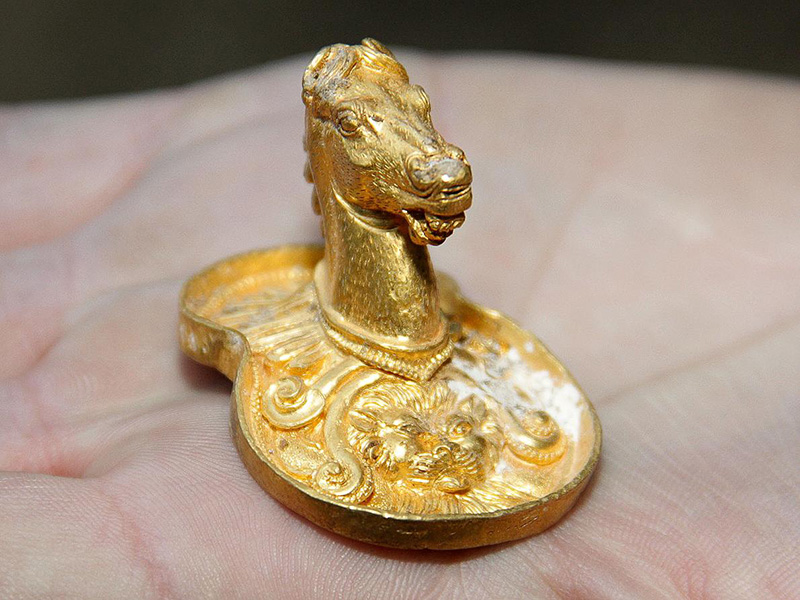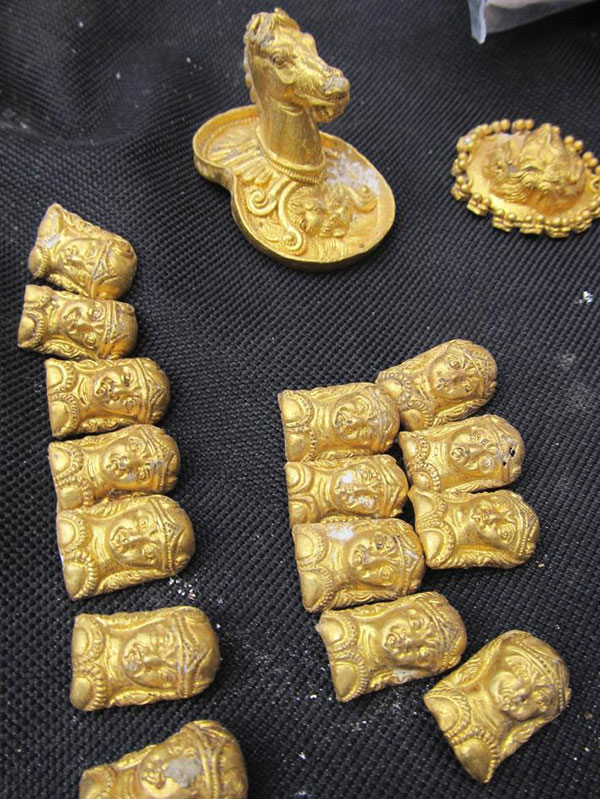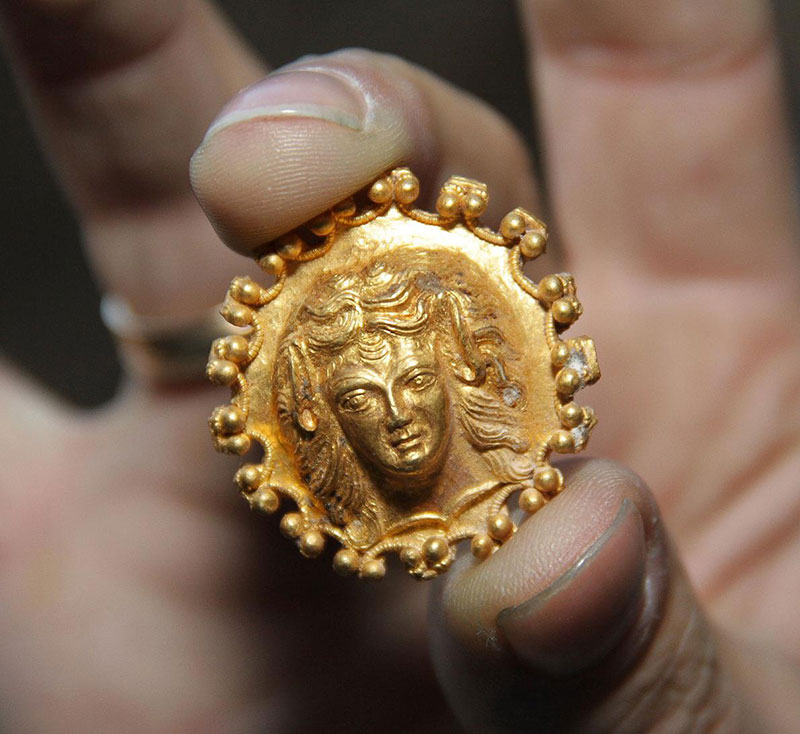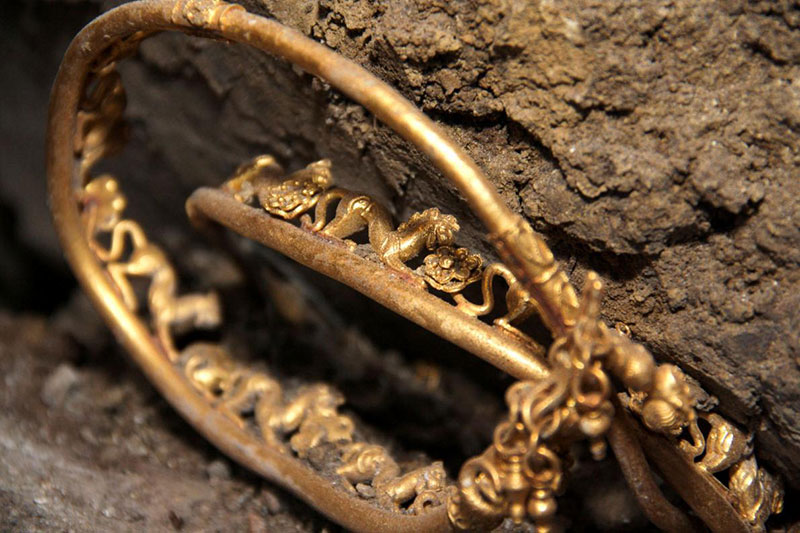National Geographic Daily News | November 10, 2012 | Ker Than

A golden horse head—an ornament from one end of a long-gone iron horse bit—is part of a 2,400-year-old treasure recently discovered in an ancient Thracian tomb in Sveshtari, Bulgaria, archaeologists announced Thursday.
The Thracians were ruled by a warrior aristocracy that had access to plentiful gold deposits at the mouth of the Danube River, which contained one of the largest ancient supplies of the metal. They enjoyed a vibrant trade with their neighbors, including the Scythians to the north, and the Greeks to the south—a fact reflected in Thracian art.
“The styles that have been found in Thracian art and Thracian gold represent a mix of Scythian, Greek, and Macedonian cultures, and of course Thracian culture itself,” said U.S. archaeologist and National Geographic fellow Fredrik Hiebert, who was not involved in the discovery.
Bulgaria has a long history of gold metallurgy. “There are sites on the Bulgarian coast that are literally thousands of years older than any other culture that used gold in a ritual fashion,” Hiebert said.n 1972, for example, a worker discovered a 6,000-year-old necropolis near the Bulgarian city of Varna that was filled with graves containing the oldest known gold hoard ever found.
In 1972, for example, a worker discovered a 6,000-year-old necropolis near the Bulgarian city of Varna that was filled with graves containing the oldest known gold hoard ever found. (See “At ‘Europe’s Oldest Town,’ Unusual Fortifications Hint at Prehistoric Riches.”)

Newly unearthed gold artifacts from a third-century B.C. tomb include a golden horse head, a ring or brooch (top right), and tiny busts of a woman, which likely decorated clothing. Photograph from ImpactPressGroup/AP
“You’re looking at workmanship made for the elite,” Hiebert said. “It’s very fine and the motifs reflect all sorts of different influences.”
The artifacts were discovered in the biggest of 150 ancient tombs of a Thracian tribe called the Getae.
“These are amazing findings from the apogee of the rule of the Getae,” Diana Gergova, head of the excavation team, told the Reuters news service. “From what we see up to now, the tomb may be linked with the first known Getic ruler Cothelas.”
Another chamber at the site, the Thracian Tomb of Sveshtari, is on the UN World Heritage List and is famous for its murals and half-plant, half-female figures. (See a statue of a Thracian female gladiator.)

Unlike some of the other newfound treasures, this golden ring or brooch looks like it was influenced by art of the ancient Greeks, with whom the Thracians traded. Photograph from ImpactPressGroup/AP
It’s also possible that this object was a decorative fastener for a horse’s covering, Hiebert said. “You can’t tell without seeing the back.”
The nearby gold-filled tombs at Sveshtari have been looted since ancient times, but this newfound hoard appears to have been better hidden than most.
“There are literally hundreds of tombs, and they’re all subterranean. They were purposely built to try and avoid looting,” Hiebert said. “They were covered up, and all the decoration is on the interior.”
(See National Geographic magazine pictures of more Thracian gold from Bulgaria.)

Adorned with lions and fantasy animals, this newfound Thracian jewelry—said to be a tiara or necklace—”looks pretty awesome,” Hiebert said. He added, though, that it might be a neck ornament known as a torc. “It doesn’t really look like a tiara to me.” Photograph from ImpactPressGroup/AP
Hiebert believes the ancient Thracians have not gotten as much recognition as they deserve. “You’ve got Hollywood movies about Alexander the Great and the Amazons. I’m waiting for the Hollywood movies about the Thracian queens.”









